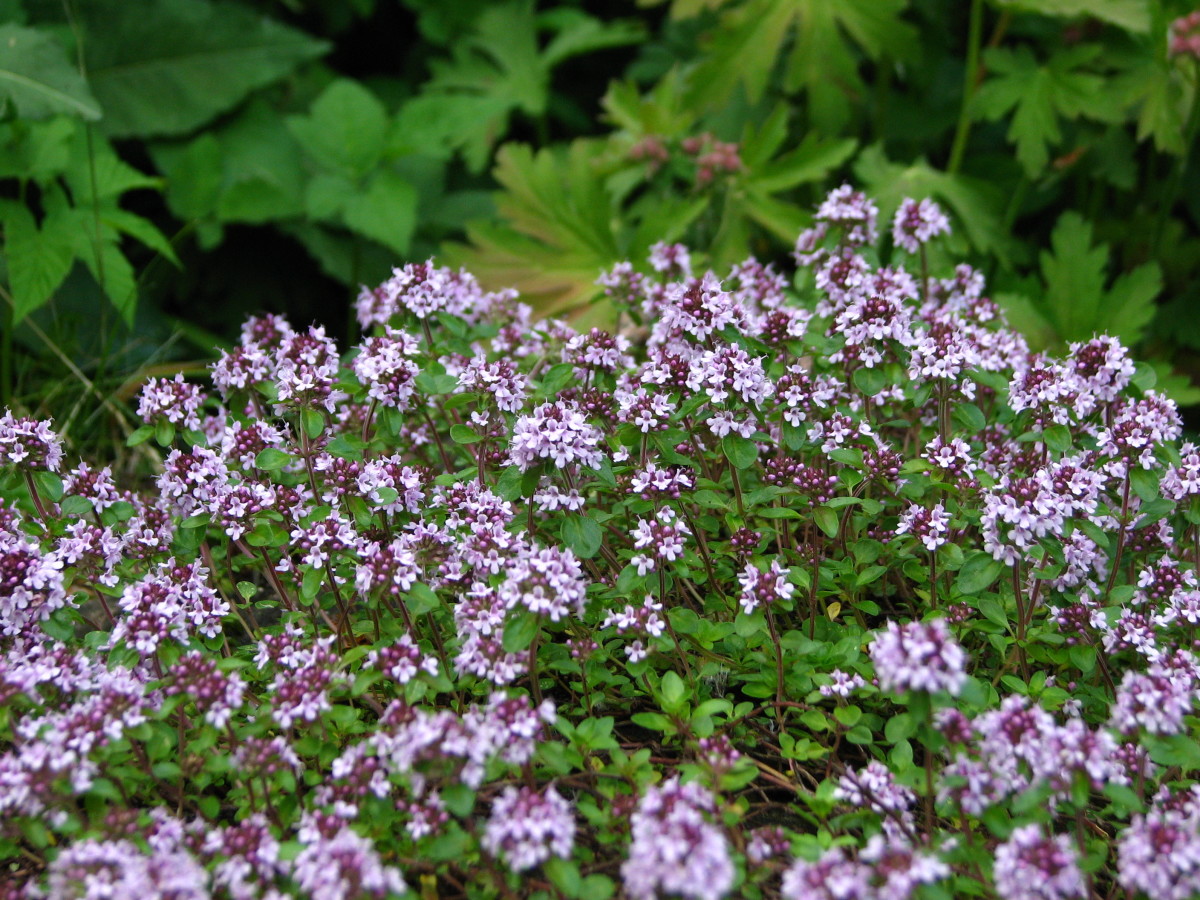A Gardener's Guide To Rosemary & Thyme: Planting, Care, And Propagation

Table of Contents
Understanding Rosemary and Thyme
Before embarking on your Rosemary & Thyme journey, let's familiarize ourselves with these amazing culinary and medicinal herbs. Rosemary, an evergreen shrub, boasts needle-like leaves and a powerfully aromatic, slightly piney scent. Thyme, a low-growing perennial, features small, delicate leaves with a subtly sweet, earthy fragrance. Both herbs are remarkably drought-tolerant once established, making them ideal for even less experienced gardeners.
Many varieties of each herb exist, offering a range of flavors and growth habits. Creeping rosemary, for instance, is perfect for ground cover, while lemon thyme adds a bright citrus note to dishes. Beyond their culinary uses in countless recipes – from roasted meats to soups and stews – both Rosemary & Thyme boast medicinal properties, traditionally used for their potential anti-inflammatory and antioxidant benefits.
- Rosemary: Evergreen shrub, needle-like leaves, strong, pungent aroma, versatile culinary herb, used in Mediterranean cooking.
- Thyme: Low-growing perennial, small leaves, delicate aroma, often used in French and English cooking, medicinal applications for respiratory health.
- Both herbs are valued for their drought tolerance and ability to thrive in sunny, well-drained locations. They are excellent additions to any herb garden.
Planting Rosemary and Thyme
The ideal time to plant Rosemary & Thyme is during spring or fall, depending on your local climate. Aim for a sunny, warm spot with well-drained soil, slightly alkaline is preferred. Both herbs dislike soggy conditions, so proper soil preparation is crucial. Choose healthy seedlings from a reputable nursery, or start from seeds indoors several weeks before the last expected frost.
- Spacing: Allow ample space between plants to ensure good air circulation and prevent overcrowding.
- Soil Preparation: Amend heavy clay soils with compost or other organic matter to improve drainage.
- Watering: Water thoroughly after planting, but avoid overwatering, especially during establishment.
Rosemary Planting Specifics
Rosemary thrives in full sun and well-drained soil. It is particularly susceptible to root rot in poorly drained conditions. You can plant rosemary from seed, but cuttings or established plants are generally more successful. Ensure proper drainage to avoid root rot problems.
Thyme Planting Specifics
Thyme also prefers full sun and well-drained soil but is more tolerant of slightly poorer conditions than rosemary. Many thyme varieties exist, each with slightly differing needs, so research the specific requirements of your chosen cultivar. Common thyme pests include aphids and spider mites; regular inspection and appropriate pest control measures are essential.
Caring for Rosemary and Thyme
Once established, Rosemary & Thyme are relatively low-maintenance herbs. They require infrequent but deep watering, allowing the soil to dry out slightly between waterings. Minimal fertilization is necessary; an occasional application of balanced organic fertilizer in spring is sufficient. Regular pruning helps maintain shape, encourages bushier growth, and prevents the plants from becoming woody.
- Weeding: Regularly weed around your plants to prevent competition for water and nutrients.
- Mulching: Apply a layer of mulch to retain soil moisture and suppress weeds.
- Winter Protection: In colder climates, provide some winter protection, such as a layer of mulch or covering.
- Pest and Disease Control: Monitor plants regularly for pests and diseases and address any issues promptly.
Propagating Rosemary and Thyme
Propagating your Rosemary & Thyme plants is easy and rewarding. Several methods are available:
- Cuttings: Take 4-6 inch stem cuttings in spring or summer, dip the cut ends in rooting hormone, and plant in a well-draining potting mix.
- Layering: Bend a stem to the ground, bury a portion of it, and wait for roots to develop before separating the new plant.
- Seeds: Sow seeds indoors 6-8 weeks before the last frost or directly outdoors in spring. Germination rates can vary.
Conclusion
Growing your own Rosemary & Thyme offers a rewarding experience, providing fresh, flavorful herbs for your culinary creations while adding beauty to your garden. By following these simple steps for planting, caring for, and propagating these wonderful herbs, you can enjoy the fragrant bounty of your own herb garden for years to come. Start your own fragrant herb garden today with these simple steps for growing Rosemary & Thyme! Learn more about other culinary herbs and expanding your herb garden on our website [link to related articles].

Featured Posts
-
 Simplemente Aragon Receta De 3 Ingredientes Del Siglo Xix
May 31, 2025
Simplemente Aragon Receta De 3 Ingredientes Del Siglo Xix
May 31, 2025 -
 Your Good Life A Personalized Journey To Self Discovery
May 31, 2025
Your Good Life A Personalized Journey To Self Discovery
May 31, 2025 -
 Brandon Inges Kalamazoo Dugout Return A One Night Stand
May 31, 2025
Brandon Inges Kalamazoo Dugout Return A One Night Stand
May 31, 2025 -
 Birmingham Supercross 2025 Round 10 Results And Highlights
May 31, 2025
Birmingham Supercross 2025 Round 10 Results And Highlights
May 31, 2025 -
 March 31 2025 Nyt Mini Crossword Hints To Help You Solve
May 31, 2025
March 31 2025 Nyt Mini Crossword Hints To Help You Solve
May 31, 2025
